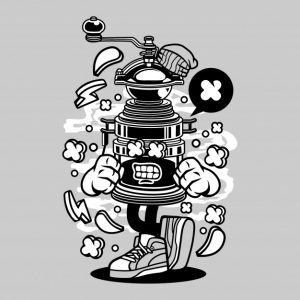or….my grinder’s not working properly!
 We find that the troubleshooting phone rings more often with grinders than with anything else in our range. Whilst very robust, grinders do need a level of care and yes, they should be serviced as well.
We find that the troubleshooting phone rings more often with grinders than with anything else in our range. Whilst very robust, grinders do need a level of care and yes, they should be serviced as well.
Let’s try to save you a trip to the service centre and some labour costs!
- I have just arrived home and added some beans to my new grinder. Now it’s not working…It’s broken/faulty…
This is a trap for new players. In all likelihood, there is nothing wrong with the grinder. Grinders are very robust and it’s pretty much impossible to damage them unless you try to grind metal such as nails, screws etc. This stuff should not find its way into coffee and a good roaster will have a destoner which will separate metal and most (but not always all) stones from the roast. The reason the grinder won’t work is that it’s most likely to be blocked or that there are beans compressed so tightly between the burrs that the motor can no longer turn them. This is user error.To attend to this, you will need to adjust the grinder to very coarse and operate it. If you’re lucky, the talcum powder like grind will spit out and you can start again. Grind some coffee and go a little finer until such point as you see some clumping begin to appear. You will then be close to the espresso zone and can then start pulling some shots to evaluate things. If you still cannot clear the grinder, you’ll need to disassemble and clean it.There are guides to disassembly of most grinders on YouTube. Search on “service insert brand and model grinder” and you’ll likely find an online guide or something similar to use as a guide. Some guides recommend compressed air and rice products for grinder service. We strongly advise against both. Use a proprietary grinder cleaner if desired and a vacuum cleaner. It’s best to suck old coffee from a grinder rather than to blow it into the electricals and/or motor. While you’re in there, make sure you clean into the spout as it may well be blocked as well. We generally use a pipe cleaner or skewer to break up any coffee clogging things. On reassembly, ensure that the threads on the burr carrier and grinder body are spotless and then reassemble and adjust until the burrs touch and then back off to your chosen setting and you should be good to go. NB Eureka and Rocket grinders disassemble without requiring adjustment on reassembly. NEVER adjust your grinder more than a little finer without operating it.
- What number do I set the grinder to?
There is no correct answer to this question. Grind setting can vary between otherwise identical grinders of the same brand and will definitely be influenced by technique, coffee, burr age and a host of other factors. If you’re unsure, it can be useful to weigh the ground coffee for consistency or otherwise find away to dose consistently. You can then taste the espresso and adjust from there. Here is one of many suitable guides:
- What about cleaning?
Good question. We see lots of really dirty grinders and these can and do dramatically influence coffee quality. Remove and wash the hopper with warm, soapy water at least once a week. Every month or so you can use a grinder cleaner as an easy and efficient way to rid a grinder of coffee particles and residue without taking apart the machine. Simply deposit a cap-full of cleaning tablets into the grinder hopper, set the grinder to coarse and run it through the machine, like coffee beans. The tablets will gently dislodge coffee particles from the burrs while also removing coffee residue and oil. Once you’re done, wash and dry the hopper, run a little coffee through the grinder to remove any remaining tablet debris (don’t worry too much, they’re non-toxic) and reset to espresso grind and you’re good to go. Even if you’re using grinder cleaner, we recommend that you disassemble and thoroughly clean your grinder at least twice a year. Make sure that you also clear the exit from the grinder chamber with something like a skewer or pipe cleaner too as any blockage (as previously discussed will not be cleared if you don’t bother). If you’re not comfortable doing that, we can do it for you! - When should I replace the burrs?
Sharp burrs = high quality grind and better results in the cup. We recommend 200kg of use for standard steel burrs and 500kg for standard steel heavy duty conical burrs. More expensive burrs can be rated at up to 5 tonne!